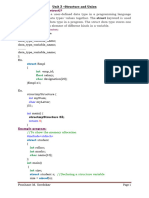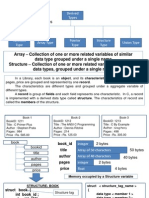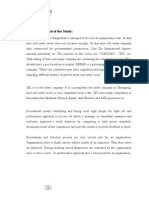0% found this document useful (0 votes)
40 views16 pagesChapter 8 - Structures and Unions
Chapter 8 of the document introduces structures and unions in C++. Structures are user-defined data types that group different variables together, while unions allow different variables to share the same memory space. Key differences include memory allocation, data manipulation, and usage scenarios for each data type.
Uploaded by
ihpaa1Copyright
© © All Rights Reserved
We take content rights seriously. If you suspect this is your content, claim it here.
Available Formats
Download as PDF, TXT or read online on Scribd
0% found this document useful (0 votes)
40 views16 pagesChapter 8 - Structures and Unions
Chapter 8 of the document introduces structures and unions in C++. Structures are user-defined data types that group different variables together, while unions allow different variables to share the same memory space. Key differences include memory allocation, data manipulation, and usage scenarios for each data type.
Uploaded by
ihpaa1Copyright
© © All Rights Reserved
We take content rights seriously. If you suspect this is your content, claim it here.
Available Formats
Download as PDF, TXT or read online on Scribd
/ 16
























































































